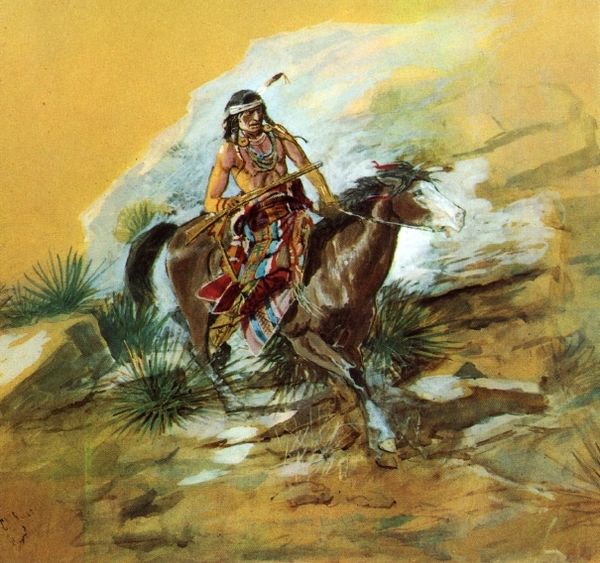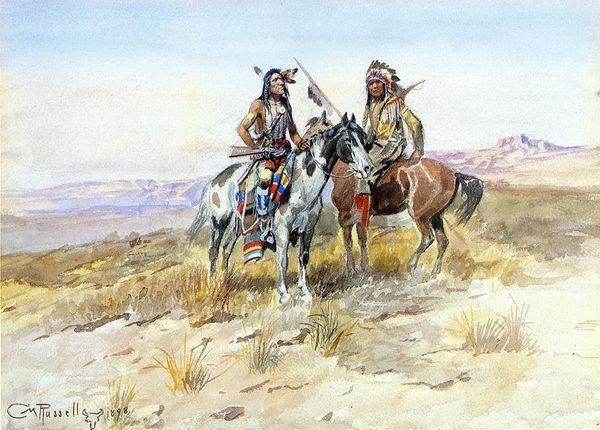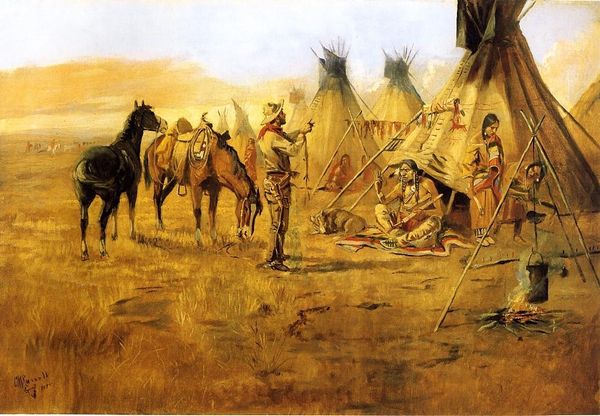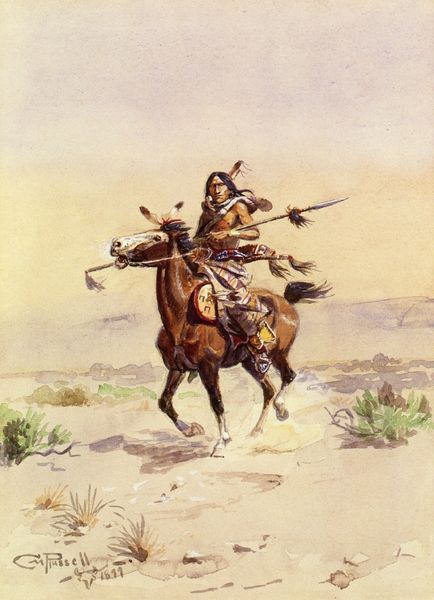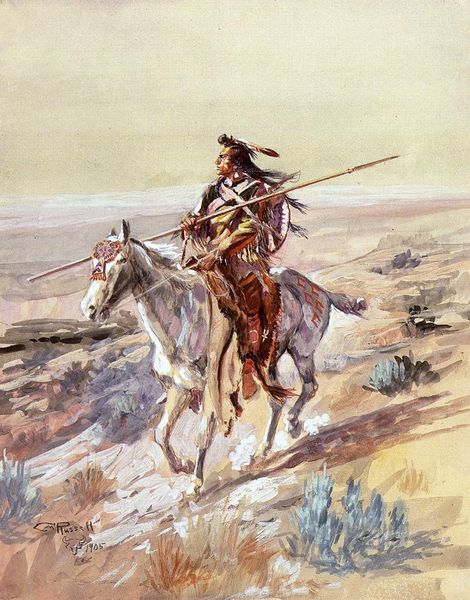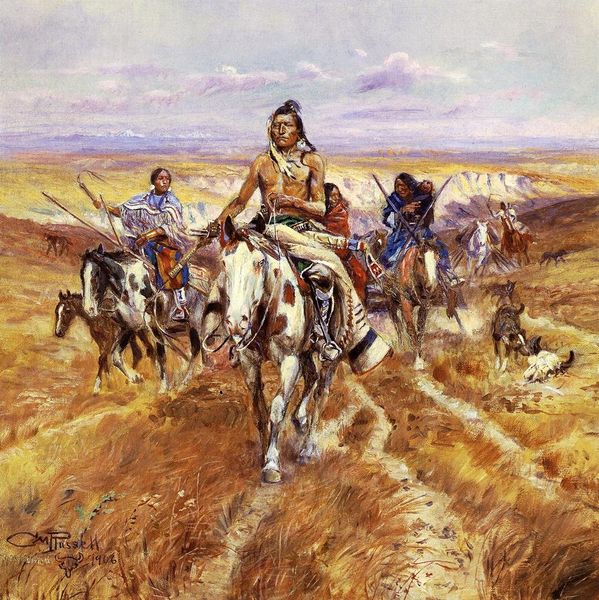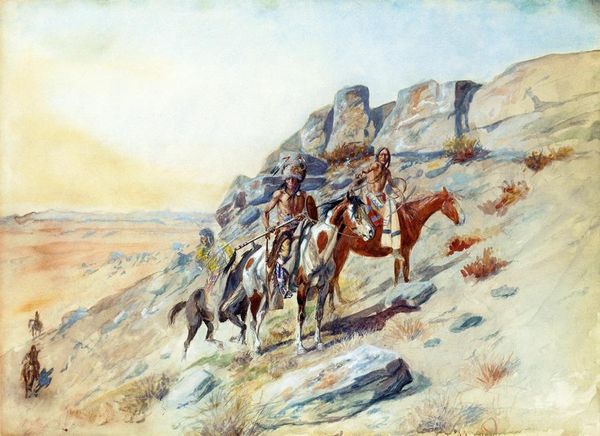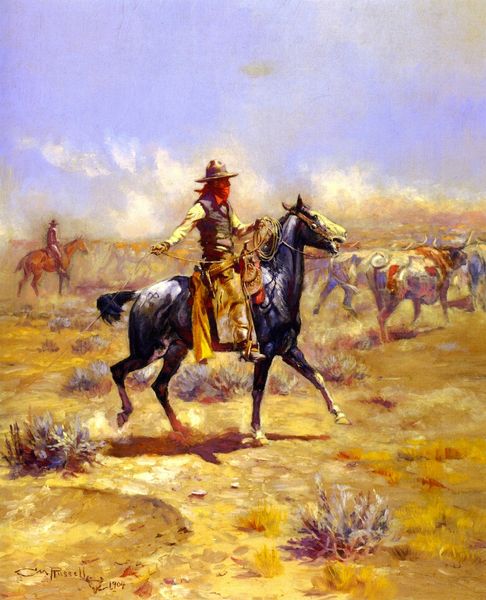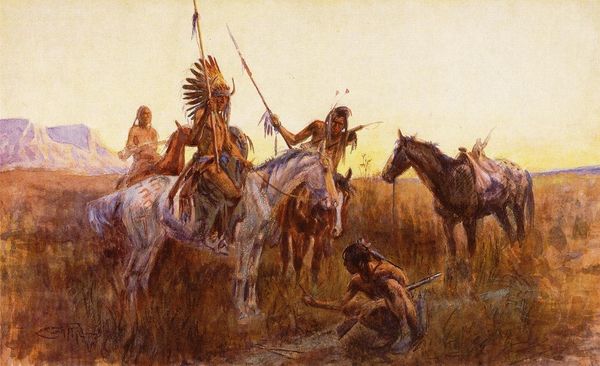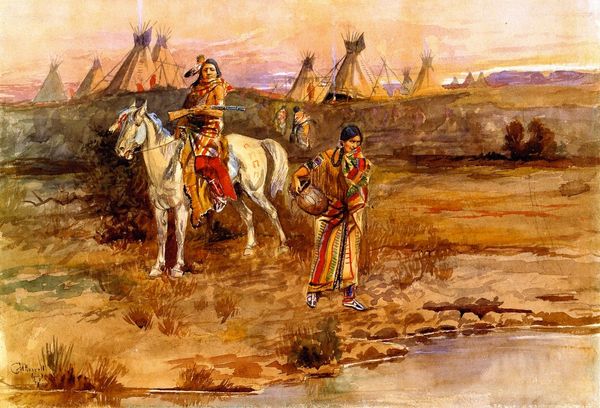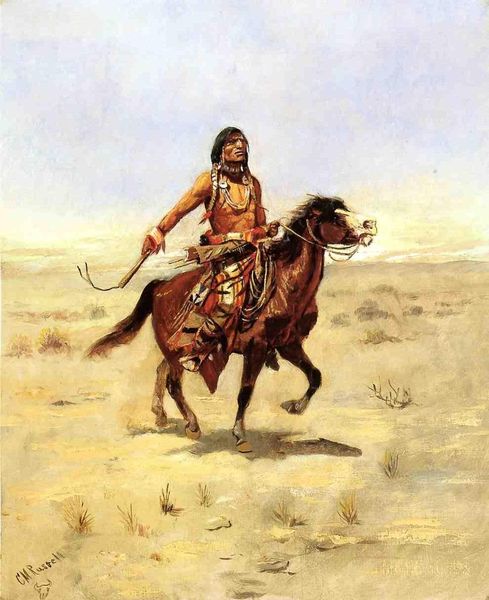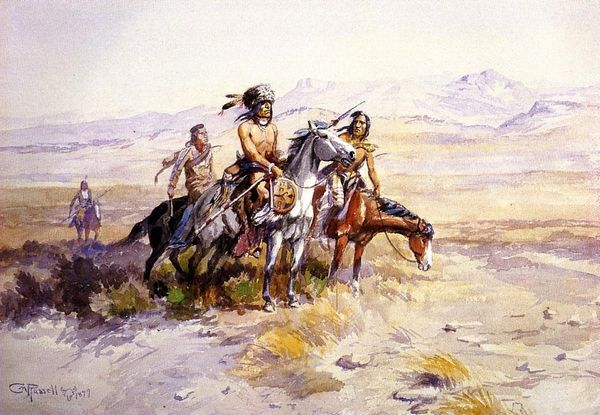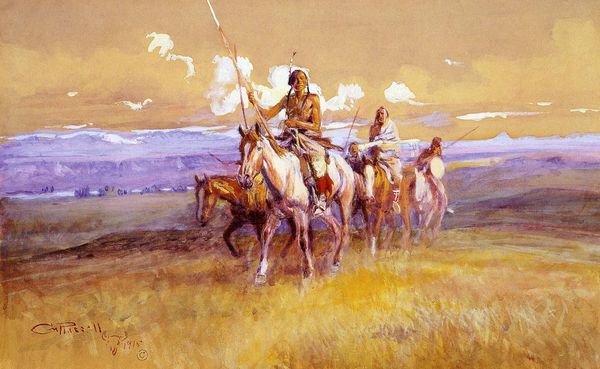
painting
#
portrait
#
painting
#
figuration
#
oil painting
#
watercolour illustration
#
watercolor
Copyright: Public domain
Charles M. Russell made this watercolor painting of a Mandan warrior and his horse sometime in the late 19th or early 20th century. You can really see the fluidity of the paint, how the colors bleed into each other to create these soft, hazy forms. Look at how Russell handles the body of the horse. There are these cool, watery blues and violets that give it a ghostly presence. The color is thin, almost translucent, and it makes the horse seem like it’s emerging from the landscape itself. The surface is stained rather than layered, which gives it a sense of immediacy. There's a zigzag of blue paint along the horse's flank - is that an abstracted lightning bolt? It’s loose and gestural, giving the whole piece a lively, dynamic quality. Russell was an admirer of the landscape painter Frederic Remington, but this painting is somehow more dreamlike, less of a straightforward depiction. What does it mean to paint a warrior in this way? Maybe art is about seeing the world not as it is, but as it could be.
Comments
No comments
Be the first to comment and join the conversation on the ultimate creative platform.
